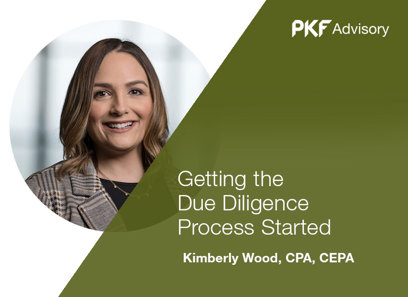Secret Insights Into Recognizing Acquisition Rate Allocation in Mergers and Acquisitions
The process of Acquisition Rate Allocation (PPA) in mergers and purchases serves as a critical framework for precisely examining the reasonable value of acquired properties and responsibilities. The subtleties of PPA can often present difficulties that merit better assessment, specifically concerning their long-lasting impacts on economic stability and efficiency.
Interpretation of Purchase Cost Allowance
Acquisition rate allotment (PPA) plays a vital role in mergers and procurements, as it includes the procedure of dispersing the total purchase cost among the various identifiable assets and liabilities of the obtained firm. This systematic method is necessary for precisely showing the fair worth of each asset and responsibility, making certain that stakeholders have a clear understanding of the purchase's monetary implications.
The PPA procedure generally involves recognizing and valuing concrete and intangible properties, such as home, tools, copyright, and consumer connections. Liabilities, consisting of financial obligations and contingent responsibilities, need to additionally be assessed to provide a comprehensive sight of the obtained entity's monetary standing. The appropriation of the acquisition price is frequently directed by appropriate bookkeeping standards, such as the Financial Bookkeeping Criteria Board (FASB) guidelines, which dictate the methodologies for reasonable worth dimension.
Inevitably, a well-executed PPA not only establishes a transparent economic structure for the acquiring business yet likewise supports future financial coverage and tax obligation evaluations. Consequently, comprehending the interpretation and auto mechanics of PPA is vital for professionals associated with the M&A landscape, as it prepares for educated decision-making and calculated preparation.
Value of PPA in M&A
The value of purchase price allowance (PPA) in mergers and acquisitions expands past plain compliance with audit requirements; it offers as a critical component in making sure accurate monetary representation and calculated post-merger assimilation. PPA provides a framework for valuing acquired properties and liabilities, permitting stakeholders to acquire a clearer understanding of the purchase's influence on the economic declarations of the getting company.
Effectively performed PPA helps in determining and measuring abstract properties, such as consumer partnerships and copyright, which are frequently essential to the success of the mixed entity. This allocation process not just influences monetary coverage but also has tax obligation effects that can affect the total economic health of the joined organization.
By developing a clear baseline of possession worths, firms can much more successfully determine the success of combination techniques and operational efficiencies. Ultimately, a well-conducted PPA cultivates transparency and develops trust among stakeholders, therefore boosting the overall success of the M&An undertaking.
Assessment Methods Made Use Of in PPA
Precise assessment techniques are indispensable to the acquisition rate allowance process, as they figure out just how the complete acquisition cost is distributed amongst the recognizable properties and liabilities of the gotten entity. Numerous valuation techniques are utilized to attain this, with one of the most usual being the Expense Approach, Market Approach, and Earnings Technique.
The Expense Technique approximates the worth based upon the cost to change a possession, changing for devaluation and obsolescence. This technique is specifically useful for tangible properties and provides a simple evaluation framework.
In contrast, the Market Approach depends on equivalent market transactions to evaluate the worth of similar possessions, using understandings based on actual sales - Purchase Price Allocation. This technique is helpful in energetic markets where equivalent sales information is offered

Picking the appropriate evaluation technique is vital, as it directly influences exactly how goodwill and various other abstract assets are acknowledged and measured in the financial declarations post-acquisition. Each approach has its benefits and restrictions, necessitating mindful factor to consider by the assessment experts involved.
Governing Factors To Consider
While browsing the intricacies of purchase price allowance, regulatory considerations play an essential role in making certain compliance with bookkeeping standards and lawful requirements. Understanding PPA Allocation. Entities associated with mergings and purchases need to comply with standards stated by bodies such as the Financial Accountancy Standards Board (FASB) and the International Financial Coverage Criteria (IFRS) These criteria dictate how possessions and liabilities obtained in a purchase ought to be measured and acknowledged
Regulatory frameworks necessitate that business do a comprehensive analysis of fair worth analyses for identifiable intangible possessions, a good reputation, and contingent responsibilities. This process involves gathering detailed information to sustain the appraisals made throughout the allotment process, ensuring openness and precision. Additionally, regulatory scrutiny might encompass the methods used, calling for justification of selected assessment methods to reduce potential disputes with tax authorities or auditors.

Effect on Financial Statements
Purchase cost appropriation dramatically influences the monetary declarations of companies taken Understanding Purchase Price Allocation part in mergers and purchases. This procedure involves dispersing the complete purchase cost amongst the acquired possessions and liabilities, affecting numerous economic metrics and overall monetary health and wellness.
The allocation impacts the annual report by recognizing abstract possessions, such as brand value or customer partnerships, which may not have actually been previously reported. These properties can enhance the business's possession base, however they likewise require succeeding impairment testing, which might cause volatility in future incomes if the possessions are considered impaired.
Moreover, the revenue statement is straight impacted as the allotment figures out the amount of goodwill identified. Goodwill undergoes yearly problems screening and can influence take-home pay substantially. The raised amortization expenses associated with the determined abstract assets may also decrease earnings in the first years post-acquisition.
In addition, exact purchase rate appropriation is important for tax obligation functions, influencing deferred tax responsibilities and future money flows. On the whole, the ramifications of acquisition cost allotment prolong past prompt accounting numbers, forming financier understandings and potentially impacting supply prices. Recognizing this influence is important for stakeholders included in mergings and purchases.
Conclusion
In final thought, Acquisition Cost Allocation (PPA) offers as a pivotal process in mergings and acquisitions, making certain the reasonable valuation of both tangible and abstract properties. Ultimately, effective execution of PPA adds to the total economic health and wellness and success of the consolidated entity.
Comments on “Typical Misconceptions in Understanding PPA Allocation”